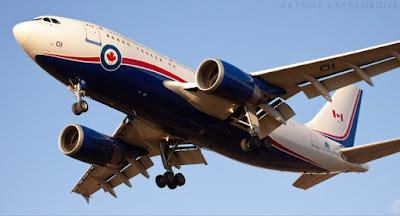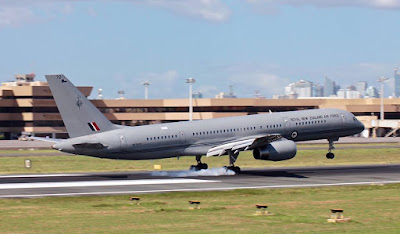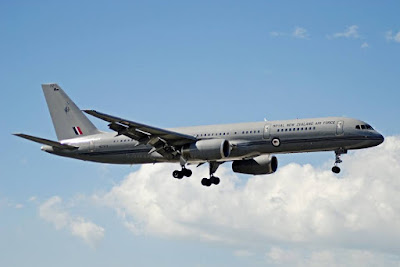The Asia-Pacific Economic Cooperation Summit recently concluded in
Manila, bringing together leaders of some of the world's most powerful
nations. With the help of our friends at the Philippine Plane Spotters
Group, we have compiled a collection of photographs to share of the
aircraft used by the visiting Heads of State.
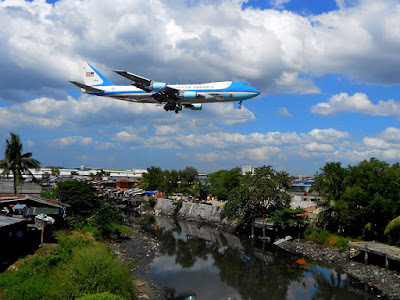 |
| Copyright Photo: JM Santos Reyes/PPSG |
This is the second time that the Philippines has hosted an APEC Summit.
The last summit held in the Philippines was in 1996. The theme for this
year's summit was "Building Inclusive Economics, Building a Better
World." The 2015 APEC Philippines Summit included four priorities:
Investing in Human Capital Development, Building Sustainable and
Resilient Communities, Fostering Small and Medium Enterprises
Participation in Regional and Global Markets, and Enhancing the Regional
Economic Integration Agenda.
Chile
 |
| Copyright Photo: Gerard Montejo/PPSG |
President Michelle Bachelet of Chile arrived aboard a Boeing 767-300ER.
It is the only VIP aircraft that carries the Chilean Military livery.
Bachelet was the first world leader to arrive in Manila for the 2015
APEC Summit. This was also her first state visit to the Philippines.
Papua New Guinea
 |
| Copyright Photo: Roman Angelo/PPSG |
Papua New Guinea Prime Minister Peter O'Neill arrived at Villamor Air
Base in Manila two days ahead of the summit aboard a Dassault Falcon 900
EX jet. O'Neill expressed gratitude for the rice exports from the
Philippines and the contributions of Filipino teachers. 30,000 Filipinos
currently reside in Papua New Guinea.
Vietnam
 |
| Copyright Photo: Gabriel Camino/PPSG |
 |
| Copyright Photo: Alwin Escobar/PPSG |
Vietnamese President Truong Tan Sang arrived in Manila aboard a
chartered Vietnam Airlines Airbus A321 aircraft. The Vietnam Presidency
is a largely ceremonial role as the Prime Minister manages the daily
functions of the Vietnamese government.
Mexico
 |
| Copyright Photo: Dominick Galauran/PPSG |
 |
| Copyright Photo: Robert Rimestad/PPSG |
Mexican President Enrique Pena Nieto arrived in Manila aboard a Boeing
757-200. Nieto's political presence at the APEC Summit was overshadowed
by his celebrity status with countless Filipino women adoring him as an
"APEC hottie." A Boeing 787-8 Dreamliner is slated to take over the role
of official Presidential aircraft in December 2015.
United States of America
 |
| Copyright Photo: Robert Rimestad/PPSG |
 |
| Copyright Photo: Lester Tangco/PPSG |
 |
| Copyright Photo: Dominick Galauran/PPSG |
President Barack Obama arrived aboard a customized Boeing 747-200B
aircraft. Obama disembarked the aircraft at the Balabag Ramp Area at
Ninoy Aquino International Airport. He was the only head of state to
arrive at this part of the airport. This is the second time Obama has
visited the Philippines. His last visit was in April 2014 on a
four-nation tour of Asia. Although the Boeing 747 is most commonly
referred to as Air Force One, the term is actually a call sign used to
refer to any aircraft that carries the President of the United States.
If the President is not on-board, a regular call sign is used. The
helicopter used to transport the President is most commonly referred to
as Marine One.
Malaysia
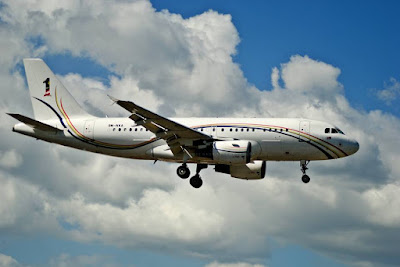 |
| Copyright Photo: Jose Gabrielle Dela Pena/PPSG |
Malaysian Prime Minister Najib Razak arrived at Ninoy Aquino
International Airport Terminal 2 aboard an Airbus A320 operated by the
Royal Malaysian Air Force. The aircraft was just purchased in 2015. This
is the Prime Minister's third trip to the Philippines after previously
visiting in October 2012 and March 2014.
Japan
 |
| Copyright Photo: Lester Tangco/PPSG |
 |
| Copyright Photo: Robert Rimestad/PPSG |
Japanese Prime Minister Shinzo Abe arrived aboard a Boeing 747-400 at
Ninoy Aquino International Airport Terminal 1. He is Japan's youngest
leader since World War II. The Government of Japan maintains two Boeing
747-400 aircraft operated by the Japan Air Self-Defense Force. They use
the callsign Japanese Air Force One when operating on official
government business, and Cygnus One when operating for other purposes
such as training flights. The aircraft always travel in pairs with one
serving as the primary transport, while the other serves as a backup.
The Japanese aircraft were constructed at the Boeing factory at the same
time as the US Air Force One VC-25 aircraft. However, the US version is
built to the 747-200 design, while the Japanese version is built to the
747-400 design. These aircraft will eventually be replaced by the
Boeing 777-300ER in 2019.
Brunei
 |
| Copyright Photo: Robert Rimestad/PPSG |
 |
| Copyright Photo: Robert Rimestad/PPSG |
The Sultan of Brunei, Hassanal Bolkiah, arrived at Terminal 2 of Ninoy
Aquino International Airport aboard his Boeing 747-400 aircraft. The
Sultan has several aircraft in VIP configuration, which are used for his
own travel and for members of the Royal Family. The Boeing 747-400 was
purchased in 1990 for $100 million and underwent a further $120 million
in upgrades including professional interior design by Reese Design. The
Sultan is one of the world's longest reigning monarchs with an estimated
net worth of $20 billion.
Thailand
 |
| Copyright Photo: Enzo Hortaleza/PPSG |
Thailand's Prime Minister Prayut Chan-o-cha arrived at Terminal 1 at
Ninoy Aquino International Airport aboard an Airbus A319CJ. The aircraft
is maintained by Thai Airways International and used primarily by
government officials. The Thai Royal family usually fly on commercial
flights operated by Thai Airways when travelling outside of Thailand.
However, a Boeing 737-800 is maintained by the Royal Thai Air Force for
royal use within the kingdom. The Thai Government also operates an
Airbus A340-500.
Singapore
 |
| Copyright Photo: Enzo Hortaleza/PPSG |
Singaporean Prime Minister Lee Hsien Loong arrived at Ninoy Aquino
International Airport's Terminal 1 aboard a modest Gulfstream jet.
Government officials from Singapore including Lee typically travel on
regularly scheduled commercial flights operated by Singapore Airlines.
However, the Singapore Air Force does maintain a small fleet of
passenger-configured Fokker 50 aircraft. Singapore is one of the richest
economies in the world with a GDP per capita income that is 20 times
higher than the Philippines.
Colombia
 |
| Copyright Photo: Lester Tangco/PPSG |
 |
| Copyright Photo: Enzo Hortaleza/PPSG |
Colombian President Juan Manuel Santos arrived in Manila at Ninoy Aquino
International Airport's Terminal 1. He was the second world leader to
arrive. However, he attended the summit as an observer under the
invitation of President Aquino. Colombia was the sole non-APEC country
invited to the APEC summit. Reports suggest that the nation's invitation
may be an initial step towards Colombia being received as an
organization member. The President arrived aboard a Boeing 737 aircraft,
which was purchased by the Colombian government in 2005. The government
fleet also includes F-28 aircraft, Lear Jets, and an Embraer Legacy.
Russia
 |
| Copyright Photo: Lester Tangco/PPSG |
 |
| Copyright Photo: Charleston Felimon/PPSG |
 |
| Copyright Photo: Robert Rimestad/PPSG |
Russian Prime Minister Dmitry Medvedev arrived at Ninoy Aquino
International Airport aboard a Russian built Ilyushin Il-96-300
aircraft. Russian President Vladimir Putin was originally confirmed to
attend the APEC summit. However, he later cancelled due to domestic
concerns. The aircraft are operated by Russia's State Transport Company.
One of the Il-96 aircraft was refitted as a VIP transport in 2001 at an
estimated cost of GBP £10 Million. It is rumoured that the luxurious
refit included marble floors, silk-lined walls, and gold-plated bathroom
fittings. It is also believed that the aircraft features an escape
capsule.
Indonesia
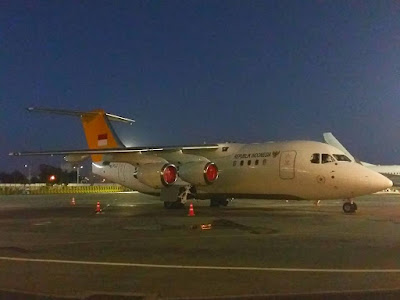 |
| Copyright Photo: Charleston Felimon/PPSG |
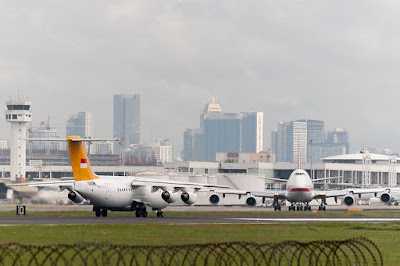 |
| Copyright Photo: Roman Angelo/PPSG |
Indonesia Vice President Jusuf Kalla arrived at Terminal 1 at Ninoy
Aquino International Airport, representing President Joko Widodo. The
Indonesian Presidential Aircraft is a Boeing Business Jet version of the
Boeing 737-800. However, Kalla arrived aboard an Avro RJ85, operated by
the Indonesian Air Force VIP squadron. The Indonesian President, known
for his common touch, turned heads last year when he
flew economy class to Singapore.
Taiwan
Former Taiwanese Vice President Vincent Siew arrived in Manila at Ninoy
Aquino International Airport Terminal 1, representing Chinese Taipei's
Economic Leader. He arrived aboard a chartered China Airlines Boeing 737
aircraft. Usually, travel by the Taiwanese Government is aboard a
Boeing 737-800 operated by the Republic of China Air Force. However,
long-haul trips are usually operated by a China Airlines Boeing 747.
Hong Kong
Hong Kong Chief Executive Leung Chun-Ying, commonly referred to as CY
Leung, arrived aboard a Cathay Pacific wide-body aircraft at Ninoy
Aquino International Airport. He was one of the first world leaders to
arrive in Manila. The Chief Executive of Hong Kong always travels on
commercial aircraft operated by Cathay Pacific, when travelling outside
of the country.
China
 |
| Copyright Photo: Robert Rimestad/PPSG |
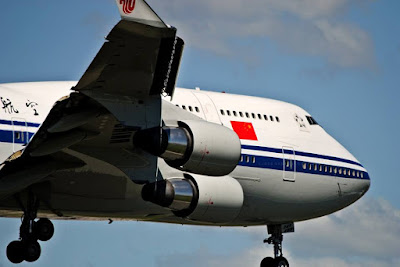 |
| Copyright Photo: Jose Gabrielle Dela Pena/PPSG |
China's President Xi Jinping arrived at Ninoy Aquino International
Airport's Terminal 1 shortly after the arrival of South Korean President
Park Gyeun-Hye. He was greeted by Hong Kong's Chief Executive CY Leung,
who arrived the night before. The President arrived aboard an Air China
Boeing 747-4J6, which is specially configured for government use and
does not operate any commercial service.
Philippines
 |
| Copyright: John Edmund Buen/PPSG |
 |
| Copyright: John Edmund Buen/PPSG |
Although the Philippines hosted the 2015 APEC Summit, it is important
not to forget that the nation also has its own Presidential
transportation. The Philippine Air Force is tasked with the
responsibility of transporting the President and the First Family. The
fleet consists of a Fokker F-28 and Fokker F-27, as well as a series of
helicopters. When the President travels outside of the country, aircraft
from Philippine Airlines are usually chartered. The call sign PR001 is
used to represent an aircraft operated by Philippine Airlines to
transport the President.
from: Philippine Flight Network
















